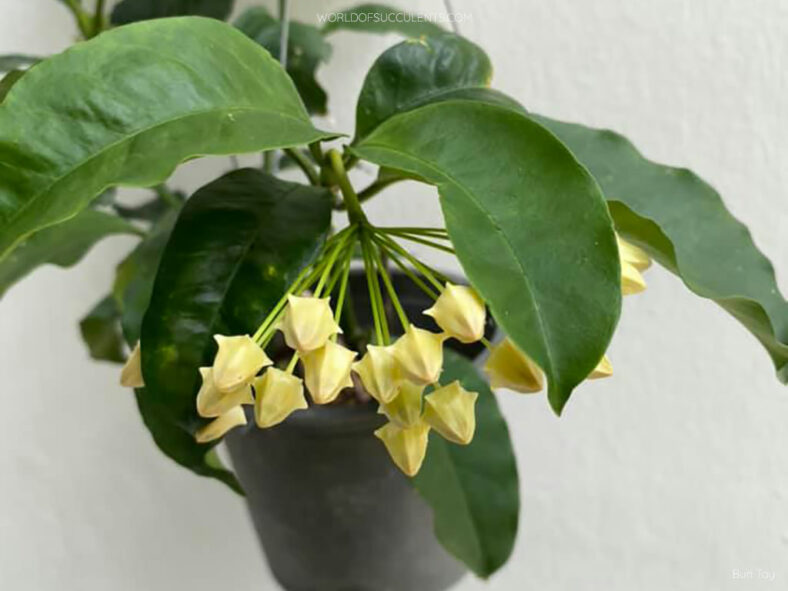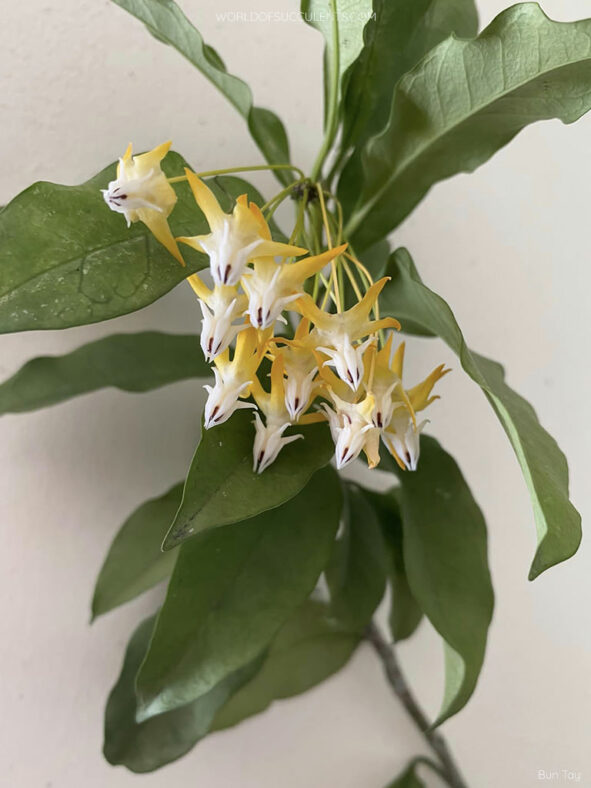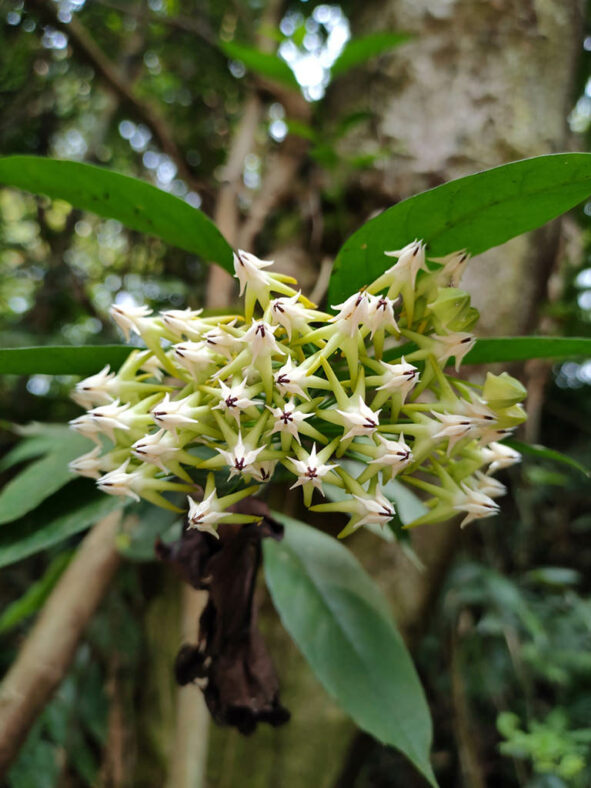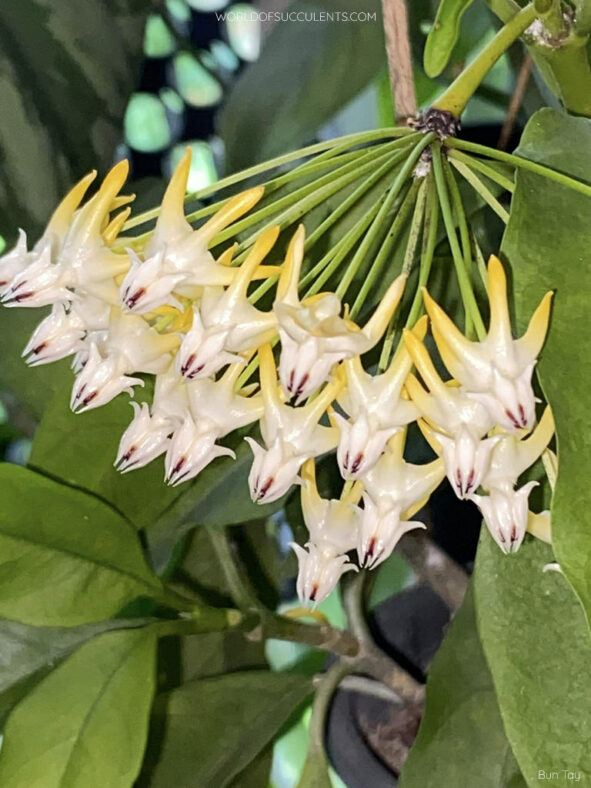Hoya multiflora is a highly sought-after plant due to its unique flowers resembling shooting stars.
Scientific Name
Hoya multiflora Blume
Common Name(s)
Many-flowered Hoya, Porcelain Flower, Shooting Star Hoya, Wax Plant
Synonym(s)
Asclepias stellata, Centrostemma multiflorum, Cyrtoceras multiflorum
Scientific Classification
Family: Apocynaceae
Subfamily: Asclepiadoideae
Tribe: Marsdenieae
Genus: Hoya
Etymology
The specific epithet "multiflora" (pronounced mul-tih-FLOR-uh) means "having many-flowers, many-flowered" and refers to the many-flowered inflorescences, often with 30 to 40 flowers.
Origin
Hoya multiflora is native to China, Myanmar, Thailand, Laos, Vietnam, Malaysia, Indonesia, and the Philippines. It grows as an epiphyte in open forests and bushlands at elevations that range from 1,640 to 3,940 feet (500 to 1,200 m).
Description
Hoya multiflora is a beautiful plant with erect or decumbent stems that bear bright green leaves with obscure veins and often white blotches. The stems are pale gray, yellowish when dry, with persistent leaf scars, and can grow up to 8.2 feet (2.5 m) long. The leaves are oblong–lanceolate, measuring up to 7.2 inches (18 cm) long and 2.4 inches (6 cm) wide. They are attached to the stem by a petiole that can reach a length of 0.8 inches (2 cm).
From early spring to late summer, Hoya multiflora produces short, stout stalks with large hemispherical clusters of up to 40 sweet-scented flowers. Each flower is attached to the inflorescence by a stalk measuring up to 2.8 inches (7 cm) long. The corolla can reach a diameter of 0.7 inches (1.8 cm), with triangular lobes strongly reflexed from the base. The corolla lobes are white to yellowish-white with orange tips. The corona is raised on a distinct stalk and has white lance-shaped lobes.

How to Grow and Care for Hoya multiflora
Light: Even if this plant can tolerate lower light levels, it may become weak and leggy if the light is too low, producing fewer leaves and flowers. Therefore, keeping it indoors in bright, indirect sunlight is best.
Soil: Well-draining soil that provides excellent aeration and does not hold too much water is most important for growing a healthy plant.
Temperature: Hoya multiflora thrives in hot and humid climates, so keep it away from drafty windows and doorways during the colder months. It grows best in USDA Plant Hardiness Zones 11a to 11b, with average minimum winter temperatures ranging from 40 to 50 °F (4.4 to 10 °C).
Watering: As this plant is sensitive to overwatering, soak the soil thoroughly during the spring and summer but allow it to dry out before watering again. Otherwise, you will increase the risk of root rot, and your plant will not be happy. It is relatively dormant during the fall and winter and needs only moderate watering.
Fertilizing: While Hoya multiflora is not a particularly heavy feeder, it can benefit from high-potassium fertilizer at half-strength every two weeks during the growing season.
Repotting: As an epiphyte, this plant has shallow root systems and needs a deep container. It also does not require frequent repotting. It actually prefers to be slightly rootbound, so repot it in spring only if it outgrows its container.
Propagation: Although layering is the easiest method, using stem cuttings is the most popular method for propagating Hoya multiflora. Using leaf cuttings can be more challenging, while starting from seeds is the simplest but the most time-consuming method. For best results, take cuttings only when the plant is actively growing, and sow the seeds in spring and summer.
Learn more at How to Grow and Care for Hoya.
Toxicity of Hoya multiflora
Hoya multiflora is considered non-toxic, so having it around kids and pets is safe.
Links
- Back to genus Hoya
- Succupedia: Browse succulents by Scientific Name, Common Name, Genus, Family, USDA Hardiness Zone, Origin, or cacti by Genus
Photo Gallery
Click on a photo to see a larger version.


